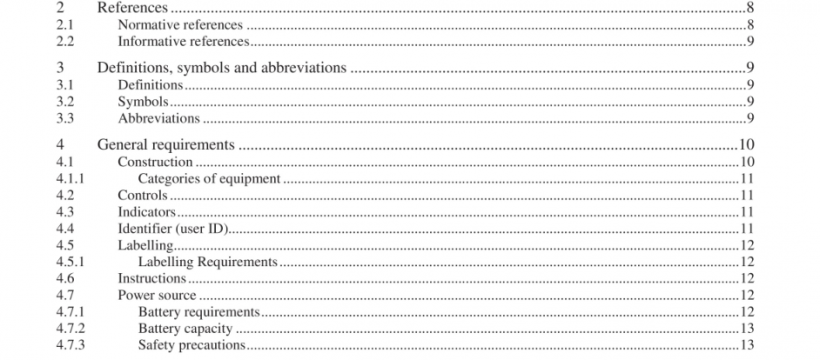AS NZS 4869.4:2015 pdf free downloadAS NZS 4869.4:20AS-NZS-4869-4-201515 pdf free download.Maritime survivor locating systems (MSLS)
All AIS equipment uses UTC for synchronizing transmissions. The version of UTC transmitted by both GPS and Galileo, is not perturbed by leap seconds so that GPS time as of January 2013 is ahead of UTC by 16 seconds. The version of UTC transmitted by GLONASS does apply leap seconds and remains synchronized to UTC albeit offset by 3 hours. Both GPS and Galileo transmit the timing offset that is applied by the GNSS receiver when computing UTC. AIS SOTDMA relies on the correct and timely computation of UTC to determine slot timings accurately. Since the AIS slot structure repeats every two seconds, the incorrect application of a leap second when determining UTC will result in AIS transmissions beginning in the middle of a time slot rather than at the beginning of the time slot. Care shall be taken when designing with multi-system GNSS receivers that UTC is correctly determined across satellite systems.
Since the equipment is required to do a GNSS cold start and to transmit its first valid position within 5 minutes of activation for GPS and Galileo GNSS receivers the equipment may maintain a stored copy of the UTC parameters leap second information.
5.2.3.2 UTC parameters storage
Where manufacturers do provide a mechanism whereby the stored copy of the UTC parameters (that is leap second offset and predictions) can be kept up to date, then the GNSS cold start shall not make use of any stored information other than valid leap second information.
5.2.4 Required settings
The locating device shall operate on dual channels, AIS1 and AIS2, in the VHF Maritime Mobile Service band. Tables 1, 2 and 3 are derived from Recommendation ITU-R M.1371-5 [1] and give the parameters required for an AIS locating device.
6.5 Test signals
The manufacturer shall supply with the submitted samples a method for producing the following test transmission signals. In addition, for some tests, is shall be possible to operate the samples in a continuous unmodulated transmission (CW) mode.
NOTE: Transmitters may have limitations concerning their maximum continuous transmit time and/or their transmission duty cycle. It is intended that such limitations are respected during testing.AS NZS 4869.4 pdf free download.
AS NZS 4869.4:2015 pdf free download
